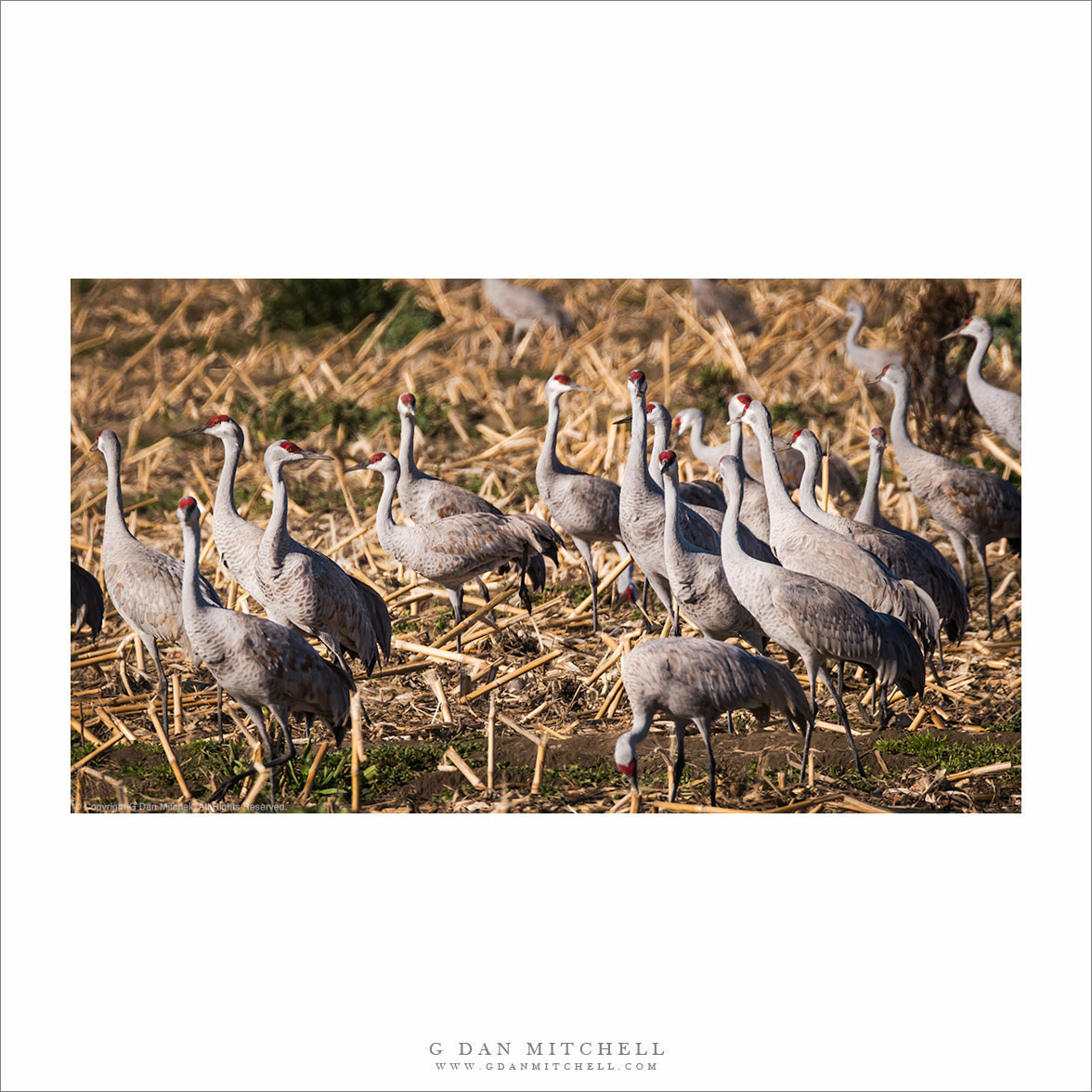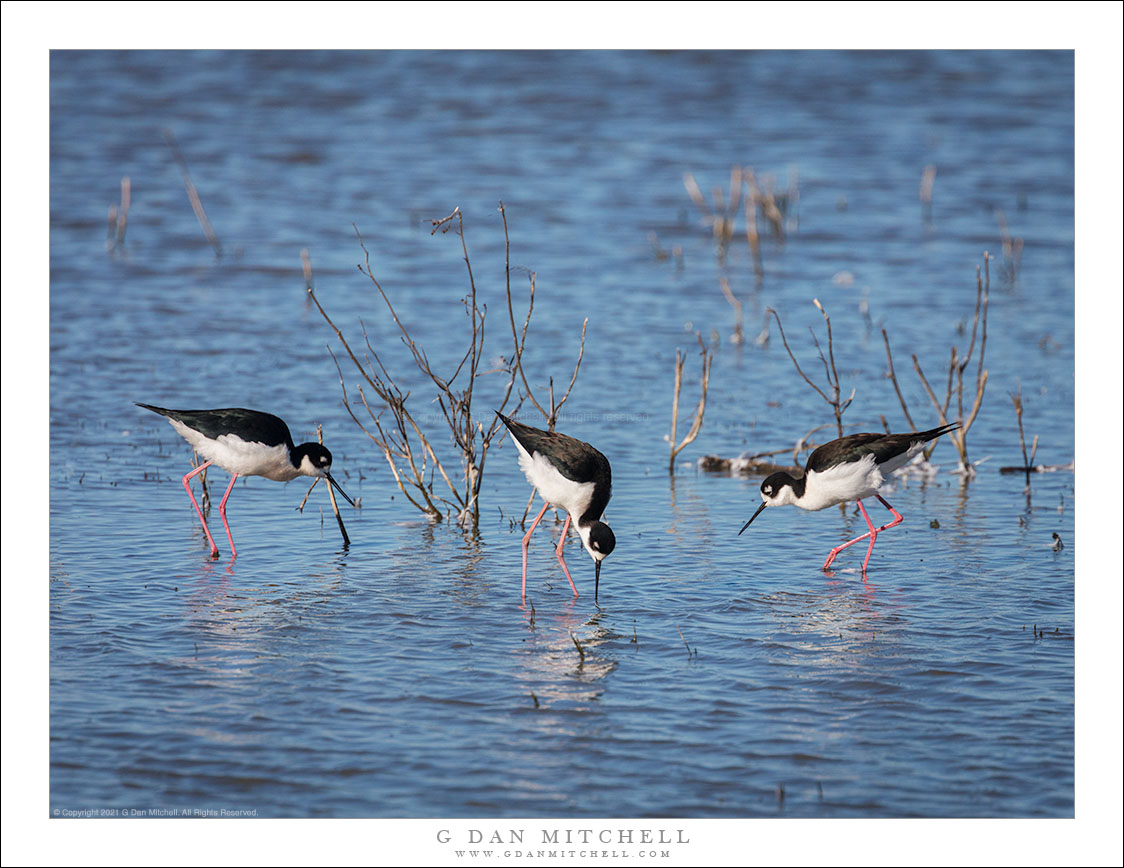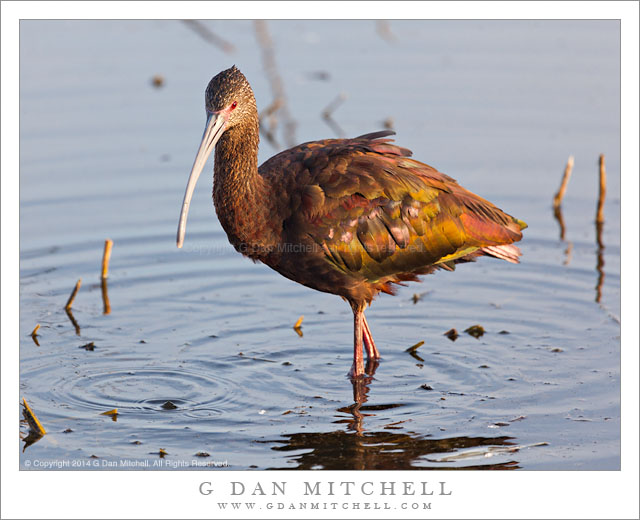
Unless and until I return to my old files to review them later on, this is likely this season’s last photograph of migratory birds. I photographed this group of lesser sandhill cranes in an old corn field on my final seasonal visit back in early March. By that date the departure of geese was perhaps a week away and the cranes would leave soon after that. This was nearly the last photograph of them I made this season.
There is a familiar arc to “migratory bird season,” as I think of the period between about November and March. Although the cranes arrive earlier, I usually make my first visit to photograph them in November. At that point they are fewer in number and likely to be off in some distant inaccessible area, and mostly I photograph them during the morning and evening fly-in/out. As the season continues they seem to become more comfortable in their surroundings, and I can often find them close enough to photograph in the middle of the day. But mid-February they and the geese become extremely active in the weeks before their northward migration.
G Dan Mitchell is a California photographer and visual opportunist. His book, “California’s Fall Color: A Photographer’s Guide to Autumn in the Sierra” is available from Heyday Books, Amazon, and directly from G Dan Mitchell.
Blog | About | Instagram | Flickr | Facebook | Threads | Post | Email
Links: Articles, Sales and Licensing, my Sierra Nevada Fall Color book, Contact Info.
Scroll down to share comments or questions. (Click post title first if viewing on the home page.)
All media © Copyright G Dan Mitchell and others as indicated. Any use requires advance permission from G Dan Mitchell.




